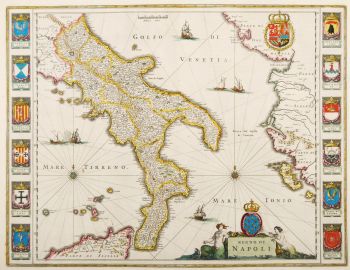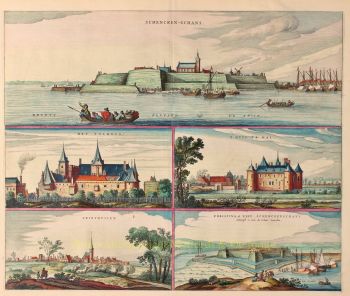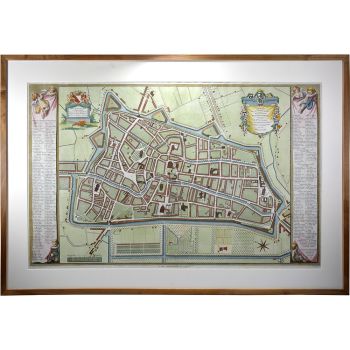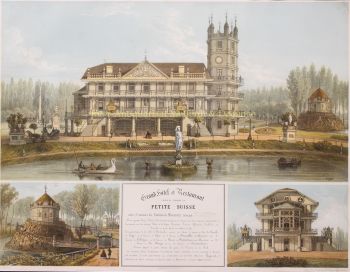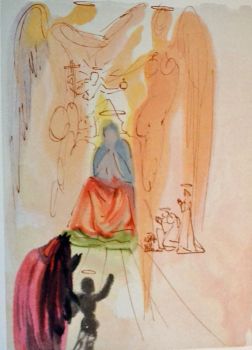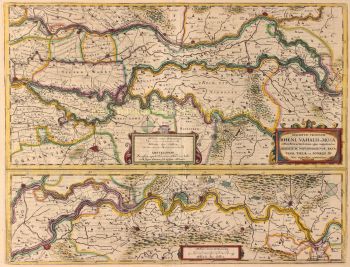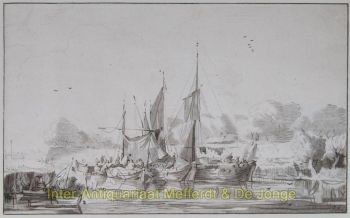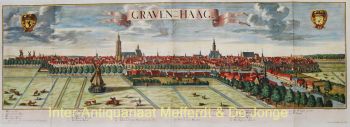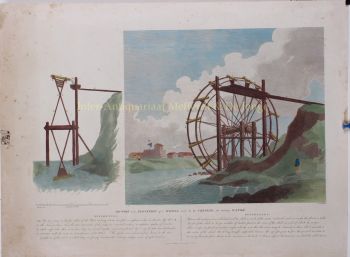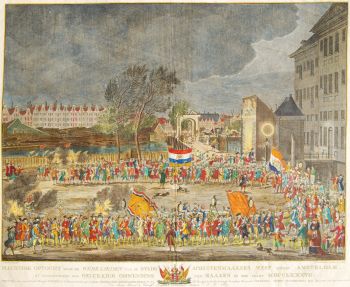Arnhem 1649
Joan Blaeu
€ 750
Inter-Antiquariaat Mefferdt & De Jonge
- Sobre la obra de arte
PLATTEGROND OF 17E-EEU ARNHEM "Aernhem", copper engraving by Joan Blaeu, as part of his "Toonneel der Steden", published in 1649 in Amsterdam. Later hand-coloured. Verso: Latin text. Sizes: 41 x 52,5 cm. The map was not drawn by Joan Blaeu, but by the cartographer Nicolaes van Geelkercken in 1639. Van Geelkercken received the commission for this from the Arnhem city council in 1638. The map thus reflects the situation around 1639. Van Geelkercken's design is not only found in this edition by Blaeu, but the printers Johannes Janssonius and Frederik de Wit also published variations on the map. Blaeu describes the city as follows: Arnhem is the capital of the Veluwe and seat of the highest court of the Duchy of Gelre. The city is "mighty, glorious, strong and rich in citizens". The Rhine flows along the city wall and the air is good because of the surrounding forests. In the surrounding area, the citizens have pleasant courtyards and gardens. On the side of the Veluwe, in the direction of Maastricht, there is a hill outside the city, "from the welcke sich a lustige aenschouwing over de naeste landen van de Betuwe vert vert vert". North of the town are hills and valleys planted with woods and heathland, where various kinds of wild animals are hunted. There is also the Wildhaen, once the hunting ground of the dukes, now "very useful for a walk for the citizens". To the south of the town, on the other side of the Rhine, are the beautiful fields of the Betuwe, where many oats, barley, peas, beans and other grain crops grow. Against "the violence from outside" the city has five "as strong as a castle" gates (four are made of stone). Of these, St. John's Gate was built in 1537 by Charles of Gelre, who feared the arrival of Charles V. Blaeu writes about the nature of the citizens that they are "courteous and lovers of science, and many live there from noble families". They are also heroic. Think of the city of Neuss that was helped by the citizens of Arnhemm during the siege by Charles the Bold. They also provided help during the terrible fire of Harderwijk in 1503. The city has a chapter of canons [in the St. Walburgis church], a Franciscan monastery [Broeren church on the map] and an Agnietenklooster [which passed into the hands of the St. Catharina Gasthuis in 1636]. The Commanderij van Sint-Jan is home to the Hospitaller knights, who used to collect a toll at the Janspoort on goods imported from the Veluwe, until this privilege was bought off by the bishop of Utrecht. In the Grote Kerk, with its beautiful tower, Duke Charles of Gelre is buried "in the inner court, of carved marble". See here for a nice animation of 17th century Arnhem. Price: Euro 750,-
- Sobre el artista
Joan Blaeu (1596-1673), nació el 23 de septiembre de 1596 en Alkmaar.
Fue un cartógrafo holandés nacido en Alkmaar. Siguió los pasos de su padre, el cartógrafo Willem Blaeu.
En 1620 se doctoró en derecho pero se incorporó a la obra de su padre. En 1635 publicaron el Atlas Novus (título completo: Theatrum orbis terrarum, sive, Atlas novus) en dos volúmenes. Joan y su hermano Cornelius se hicieron cargo del estudio después de la muerte de su padre en 1638. Joan se convirtió en el cartógrafo oficial de la Compañía Holandesa de las Indias Orientales.
El mapa del mundo de Blaeu, Nova et Accuratissima Terrarum Orbis Tabula, que incorpora los descubrimientos de Abel Tasman, se publicó en 1648. Este mapa fue revolucionario porque "representa el sistema solar de acuerdo con las teorías heliocéntricas de Nicolaus Copernicus, que muestran la Tierra girando alrededor el sol... Aunque el innovador libro de Copérnico Sobre las revoluciones de las esferas se imprimió por primera vez en 1543, poco más de un siglo antes, Blaeu fue el primer cartógrafo en incorporar esta revolucionaria teoría heliocéntrica en un mapa del mundo".
El mapa de Blaeu se copió para el mapa del mundo colocado en el pavimento del Groote Burger-Zaal del nuevo Ayuntamiento de Ámsterdam, diseñado por el arquitecto holandés Jacob van Campen (ahora el Palacio Real de Ámsterdam), en 1655.
La Hollandia Nova de Blaeu también se representó en su Archipelagus Orientalis sive Asiaticus publicado en 1659 en el Kurfürsten Atlas (Atlas del Gran Elector). y utilizado por Melchisédech Thévenot para producir su mapa, Hollandia Nova—Terre Australe (1664).
Como "Jean Blaeu", también publicó el volumen 12 "Le Grand Atlas, ou Cosmographie blaviane, en laquelle est exactement descritte la terre, la mer, et le ciel". Una edición está fechada en 1663. Era un folio (540 x 340 mm) y contenía 593 mapas y láminas grabados. En marzo de 2015, se puso a la venta una copia por 750.000 libras esterlinas.
Alrededor de 1649, Joan Blaeu publicó una colección de mapas de ciudades holandesas llamada Toonneel der Steeden (Vistas de ciudades). En 1651 fue votado en el consejo de Ámsterdam. En 1654 Joan publicó el primer atlas de Escocia, ideado por Timothy Pont. En 1662 reeditó el Atlas Novus, también conocido como Atlas Maior, en 11 volúmenes y uno para los océanos.
Se planeó una cosmología como su próximo proyecto, pero un incendio destruyó el estudio por completo en 1672.
Joan Blaeu murió en Amsterdam el año siguiente, 1673. Fue enterrado en Westerkerk en Amsterdam.
¿Está interesado en comprar esta obra de arte?
Artwork details
Related artworks
- 1 - 4 / 12
- 1 - 4 / 24
Cornelis Anthonisz Theunissen
ZEER ZELDZAME EERSTE GEDRUKTE KAART VAN AMSTERDAM, EEN STAD IN OPKOMST1544
€ 175.000Inter-Antiquariaat Mefferdt & De Jonge
 Gecureerd door
Gecureerd doorDanny Bree
1 - 4 / 12






